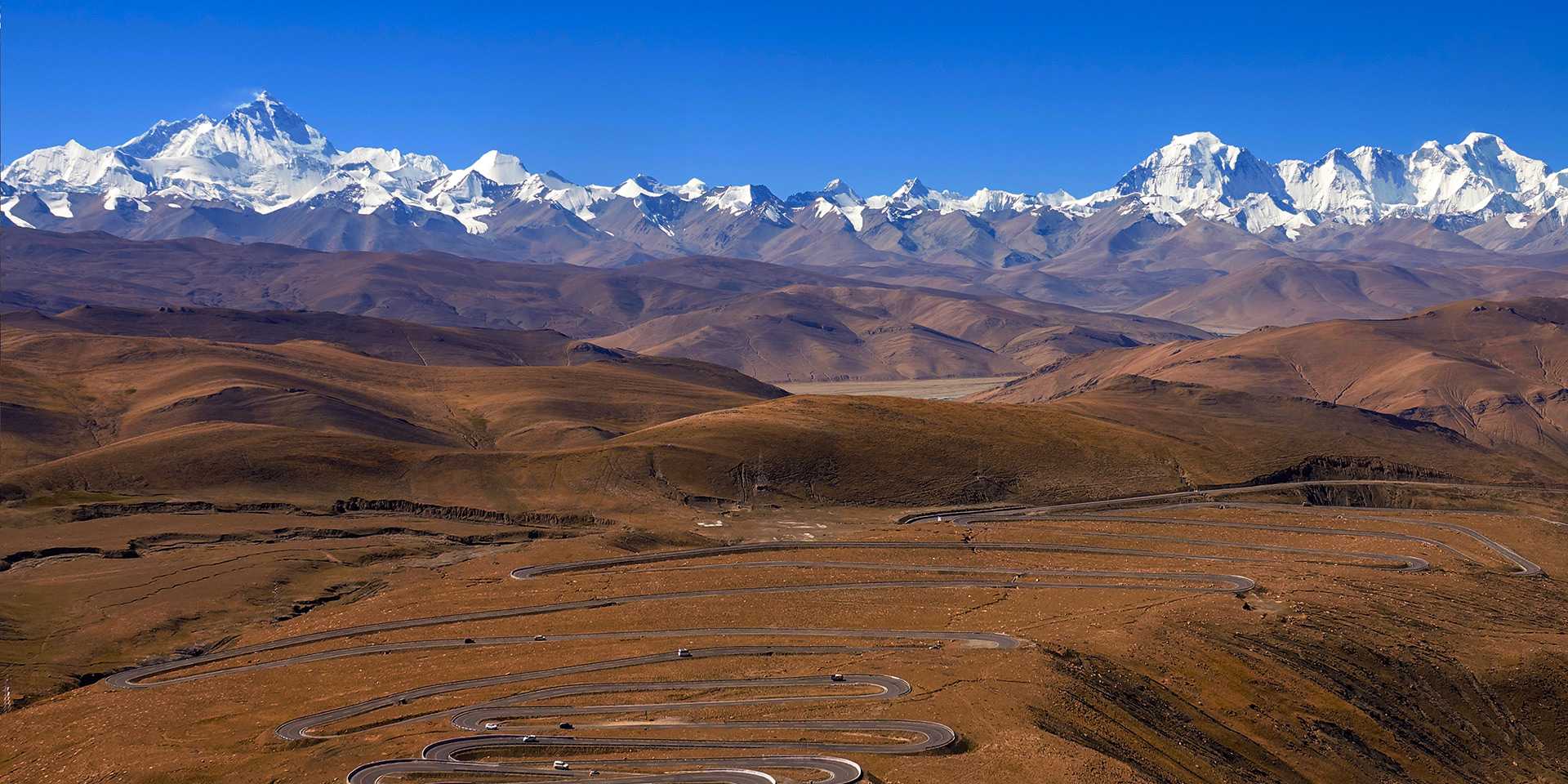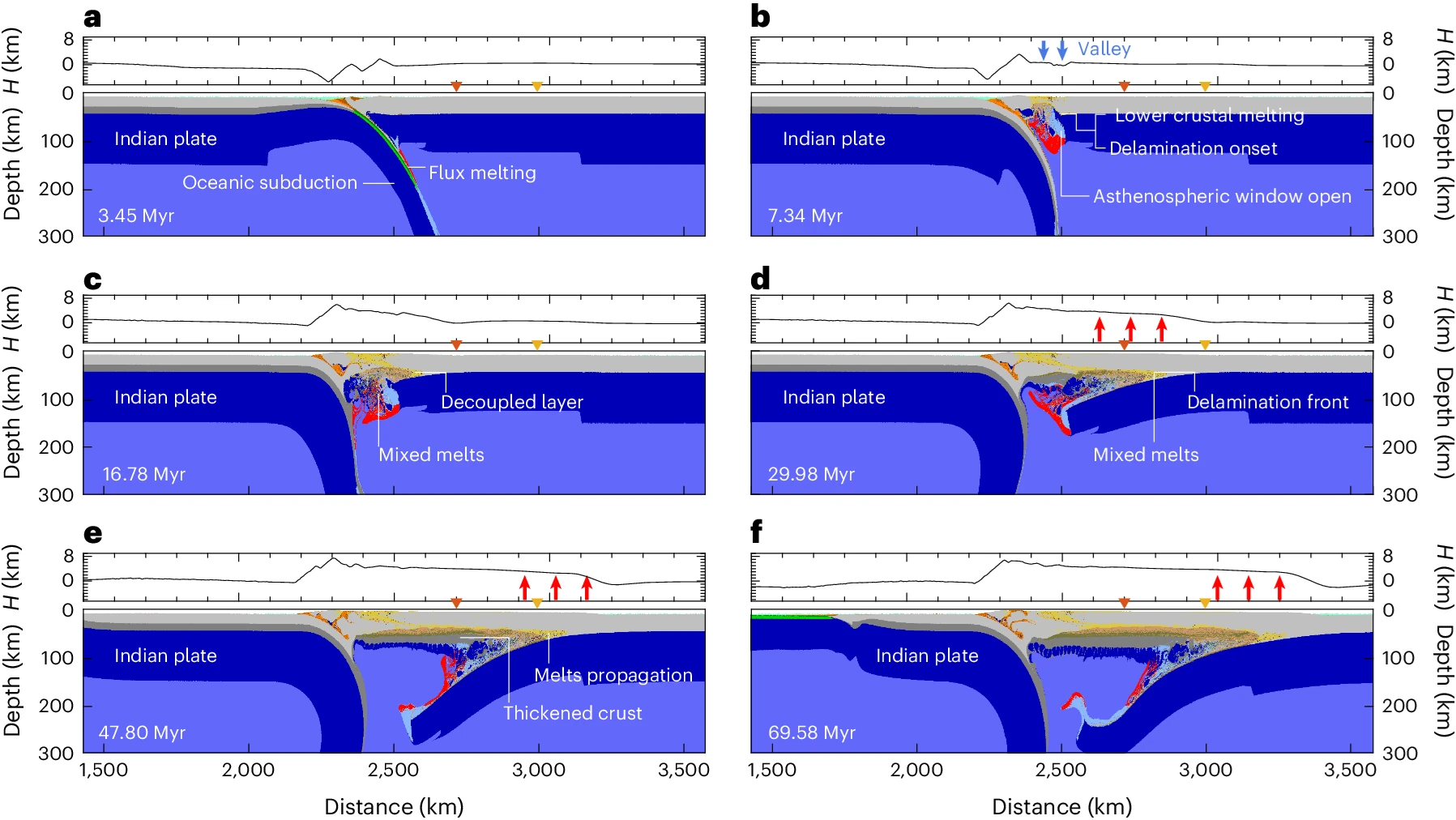New insights into the formation of the Tibetan Plateau
The Tibetan Plateau, known as the "Roof of the World", spans 2.5 million square kilometers with an average elevation over 4000 meters. A new study in Nature Geoscience suggests that mantle delamination of the overriding plate may explain the mysterious formation of this vast region.

The challenge of understanding the plateau
The Tibetan Plateau's formation is a complex interplay of subduction, collision, crustal deformation, magmatism, and climatic factors. Traditionally, models struggled to integrate these factors into a coherent explanation. An ETH research team led by Yuan Xie and Attila Balázs sought to address three major observations: the stepwise growth of the plateau, the distribution of magmatic activity, and the seismic anomalies beneath it.
The new model
Using high-resolution numerical simulations, the researchers proposed that the subduction of the Indian plate beneath the Eurasian plate caused the latter's mantle lithosphere to peel off, a process known as mantle delamination:
Oceanic Subduction Phase
Initially, the Indian plate's oceanic crust subducts beneath the Eurasian plate, causing hydration and partial melting of the mantle wedge, which then accumulates in a volcanic zone, known as an arc, leading to its weakening.
Transition to Continental Subduction
As subduction continues, these melts migrate toward the upper plate hinterland, gradually peeling off the lithospheric mantle and forming a proto-plateau.
Development of the Plateau
Continued mantle delamination drives surface uplift, expanding the proto-plateau into the vast Tibetan Plateau we see today. The ongoing subduction of the Indian plate results in crustal thickening and further uplift.

The study represents an international collaboration combining expertise from various fields. Yuan Xie, Attila Balázs and Taras Gerya from ETH in collaboration with colleagues from Wuhan University integrated geophysical and geochemical data with sophisticated numerical models, comparing results with numerous palaeo-altitude, geochemical, and geophysical studies.
It opens new avenues for understanding the formation of orogenic plateaus and the role of mantle delamination. Future research could explore the impact of inclined subduction, the 3D spatio-temporal evolution of delamination, and its links to climatic variations, surface processes or biodiversity. This knowledge could significantly enhance the current understanding of the feedback between deep Earth and surface processes.
Reference
Yuan Xie, Attila Balázs, Taras Gerya and Xiong Xiong. Uplift of the Tibetan Plateau driven by mantle delamination from the overriding plate. Nature Geoscience, 17, 2024, external page doi: 10.1038/s41561-024-01473-7